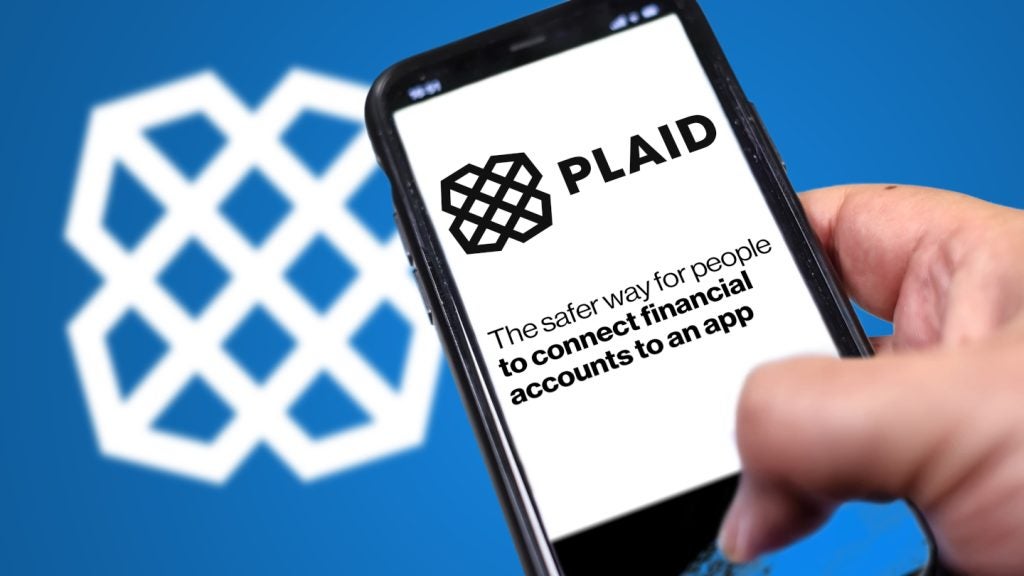There has been a large amount of hype centred on gamification and its application to financial institutions. Although predictions have been made of a widespread uptake, has the innovation left a real mark on the banking industry? John Schaffer speaks to industry experts on the topic
The consumer appetite for video games has grown exponentially over the past few years. Video games have overtaken film as the biggest entertainment industry. Clearly interactivity is paramount in the digital age, so can this addictive pastime be utilised by financial institutions in the form of gamification?
According to a 2014 survey from the entertainment software association, 59% of Americans play video games. The demographic of players has also changed. Computer games can no longer merely be associated with children and male teenagers, with the average gamer age being 31 and 48% female.
The rise in popularity of video games has meant that the sentiment behind it has become more pervasive. Gamification takes game mechanics and applies them to a non-gaming context by using features such as collecting tokens, competition with friends and addictiveness.
Gamification has been successfully adopted in scenarios such as learning applications. Apps such as Duolingo, where users can learn a foreign language, or Codecademy, where numerous computer programming languages can be learnt, utilise gamification whereby users compete with each other and share their stats over social media. This incentivises the experience, as users are more likely to improve in a competitive environment.
Using gamification in a financial context does not have to mimic the feel of a video game. The interpretation of what gamification is can be different for both financial institutions and customers.
Alex Bray, retail channels director for banking at Misys, told RBI: "It is always very interesting how we define gamification and what people mean by gamification because it means very different things for different people. The way I define gamification, is to look at any application of the principals of gaming within a business process. For some banks they see it very much as a defined, ‘I have launched a game’ sort of thing. For some banks, it’s very much about taking a process and adding the concepts of gamification to it to get people to do that process more regularly."
The integration of gamification into a financial context usually centres on either branding or education. The education element will be predominantly centred around personal financial management. Financial institutions have used gamification in a purely branding context, but it is questionable how effective these applications can be.
Barclaycard launched its waterslide extreme app in 2009 and attained 3m downloads within two weeks of release. The game saw users navigating slides whilst collecting coins and avoiding dangerous obstacles. Although the game was clearly popular and had an addictive element, the experience had no relation to any of Barclaycard’s services.
However, current banking apps are certainly not amongst consumers’ favourite, so gamification could potentially be a way to improve consumer engagement. Current banking apps are, in the most part, seen as purely functional. On the other hand, as games are not usually seen to be a serious pursuit, the image of gamification is perhaps incongruent with customers’ fears over financial security.
There has certainly been a degree of hype around gamification over the past few years. However, there has not been a mass uptake of gamification technology by banks and financial institutions. Although services such as BBVA’s ‘game’ have had successes, with 100,000 active users six months after its release, gamification has not become as pervasive as some had predicted.
Online fraud was up 71% in 2014, according to Financial Fraud Action UK, despite the release of numerous gadgets to tighten security. So the ‘fun’ image of gamification is perhaps met with scepticism as consumers fear the reliability of financial security.
Bulgarian bank uses gamification
Bulgaria’s DSK bank uses a gamification app called Gameo, giving customers a personal financial management tool. The application takes everyday banking tasks such as setting financial goals and making savings, and creates a game around the process. Customers can gain real world benefits by attaining points in the game to redeem against incentives such as concert tickets or vouchers.
The benefit for the bank is that it encourages DSK customers to make regular savings. Misys, a financial software development company, have developed the technology used by DSK.
A spokesperson from DSK Bank told RBI that alongside the expected benefits such as increased revenue through savings, improvements in market perception and greater customer engagement the gamification app allows the bank to improve its Corporate Social Responsibility profile: "Realising the low financial literacy in Bulgaria, we designed a series of questions which will help our customers about personal finance for which they receive reward points."
The name of the game
Gamification brings up connotations of a novelty item. Although banks and financial institutions will not disregard the effectiveness of entertainment for customer engagement, gamification can conjure up a juvenile image. Although there have been some instances of gamification, uptake has been modest, especially amongst the larger banks.
Bray said: "The name gamification does not do gamification any favours. When people talk about the cloud, people freak out because they imagine some sort of amorphous blob that’s incredibly vulnerable, and we know that the cloud is not like that at all. The name has not helped the concept here. If it was called something else, it would probably have been adopted much faster."
Banks are slow to adopt technology innovations but it is understandable as financial institutions hold some of the most sensitive information about individuals. The similarities to the adoption of cloud technology are clear, as the name of an innovation could understandably deter customers if it promotes a lack of trust.
Gamified internal training
Brian Burke, research VP at Gartner, suggested that the focus has moved away from customer engagement to internal staff training: "While there was an initial flurry of activity in banks around gamification, it has somewhat died down.
"Clearly where it has shifted is to training for banks. There have been a number of vendors and applications that have sprung up fairly recently. Vendors such as Morph Media, True Office and Banker’s Lab provide specific training for banks and financial institutions."
Burke comments on the relative lull in advancement in gamification: "The over inflated expectations are adjusting back to reality. I think that when you look at how gamification is being leveraged, there is a bit of a lull in terms of the hype. But, ultimately there is value in terms of engaging in motivating people using gamification, so we’ll eventually see that turn around."
Slow uptake in the US
Banks and financial institutions in America have been slow in their uptake of gamification. There have however been some moderate success. PNC Bank released ‘Punch the Pig’ in 2010. The app encourages customers to save by punching a piggy bank that pops up, and a saving amount is suggested. Money is transferred from the spend account to the growth account. The app can be set to pop up spontaneously, encouraging customers to save small amounts at regular intervals.
Bray talked about gamification in the American market: "If we are talking about does every bank have a standalone application saying, ‘here’s my gamification app’, then yes the uptake has been slow in the American market.
"I think what banks should be thinking about is more subtle. It’s about how you take the concepts of gaming and deploy them against your existing processes. Clearly we’ve seen some banks start to do this from the internal training perspective.
"Then we are seeing some banks using it for education. We’re seeing it in patches here and there, but I think people are slowly starting to come alive to the fact that it is not a standalone thing that you deploy; it is something that you have to look across your processes and see how you can improve them by deploying those principals. It’s less of a thing that you do, it’s more of a concept that you apply."
Kartik Ramakrishnan, senior VP at Capgemini, gave RBI his views on the uptake in America: "You’d be hard pressed to find examples of gamification at the major banks. It’s the start ups and the new entrants who’ve probably adopted it more.
"You’ll find examples in Asia, you’ll find examples elsewhere, but the scale is fairly low in North America."
Demand in the Asian market
Where there has been little uptake in the American market, gamification has had some appeal in Asia. Video games are ingrained into society in the east, where the vast majority of gaming technology has originated.
Brian Burke, research VP Gartner, told RBI: "If I had to guess, I would suggest that banks in North America want to be perceived as being more serious, and they think that gamification may detract from that, whereas in the east, it’s not that banks don’t perceive themselves as being serious, but they don’t engage with their customers in as serious a manner."
PlayMoolah, is a Singapore headquartered technology company who create interactive games for mobile devices. The games are primarily educational and assist users in the management of their finances. The company has partnered with two banks in Singapore, OCBC and DBS. PlayMoolah’s applications have been used by approximately 65,000 people since launching in 2011.
PlayMoolah’s partnership with OCBC uses the technology company’s Moolahverse mobile app. Access to the game is given to new account holders with $50 deposited. The game is aimed at children aged six and above and is a learning tool for children to cultivate their money management skills. Parents can monitor their child’s activity through their own dashboard which is linked to the child’s account.
Bi Ying Wong, marketing lead at PlayMoolah, told RBI: "For each license that was given away, three times as many new customers were acquired through this campaign"
The start-up fintech company also has a game named WhyMoolah, released in 2013. The game is targeted at young adults and is a real life simulator which emulates scenarios such as paying back student debt and budgeting. Wong said: "We ran four campaigns with DBS Bank. This generated over 1000, leads for them in the time span of four months."
Ramakrishnan, Capgemini, told RBI: "If you see banks in Asia, there’s a whole range of new banks, many of whom don’t have what would be fairly mature internet banking options, they did not have fully fledged internet banking capability and they’re just coming around to starting to build more internet facing banks.
"What I see in three or four years time is the next wave of digital hits. The US will see a high increase in some of these methods as part of what they are rolling out to the market."
What makes an app effective?
Andy Lees, member of the UK board at Capgemini, told RBI: "The rules I give my clients are:
- Keep it simple;
- Make sure its engaging through to addictive;
- Make sure that their friends or social group can also access it (because competition is only fun if it’s your mate that you’re playing against);
- Give it some purpose to the outcome, (i.e. there’s something to celebrate in that success)."
Lee added: "I think the ones that haven’t worked so well, are the ones that are almost too corporate, too obvious in terms of the message or what they are trying to push to the audience base.
"So if you play the game and I’m going to end up being sold a loan, I’m probably not going to play it. It creates implicit awareness as opposed to direct obvious sell. So keep it simple, keep it engaging and give me some purpose to celebrate."
Gamification still has a long way to go until it is completely mainstream. Only time will tell if the major banks become more serious in their uptake and the innovation becomes less of a novelty.
Impulse Saving
Nationwide, the UK’s largest mutual, has added gamification features to its smartphone app. The ‘Impulse Saver’ feature encourages customers to save small amounts regularly with minimal effort. Customers are not required to enter the regular authentication requirements and can save without entering a passcode.
The functionality of Impulse Saver is almost identical to PNC’s Punch the Pig app. Impulse Saver rewards customers with an interactive piggy bank graphic to provide tangible feedback. Nationwide released the added gamification feature in June 2014 and the building society claim that £7m has been saved since its launch.
Paul Cooper, head of digital banking at Nationwide, told RBI: "The benefits of gamification are clear; Impulse Saver is specifically designed to promote and reward savings behaviours making saving fun and engaging whilst encouraging customers to create a nest egg.
"We have seen over 52,000 customers use the feature of the last few months, showing the popularity of saving on an impulse."







